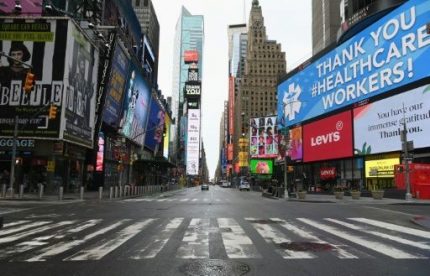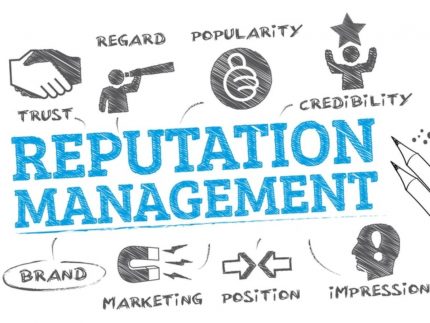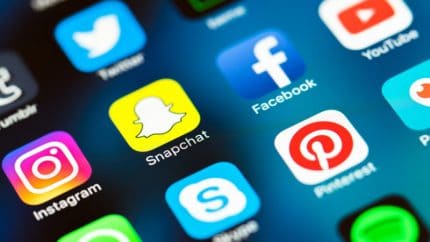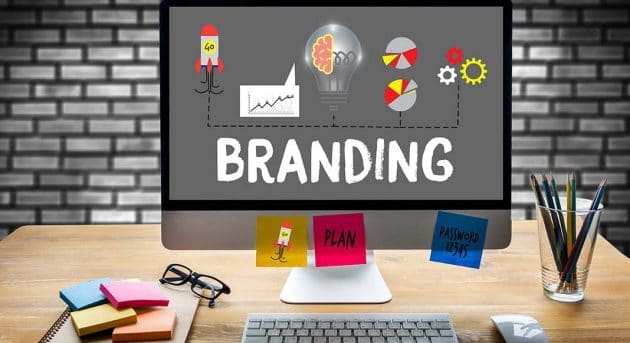The importance of managing your brand when creating online content

Almost overnight concert, theatre and music venues were shut down. Those who performed in them were suddenly locked indoors. It’s not just a question of asking when they will open again, but where does it leave performers? How do you practice with your fellow performers? How do you plan for the year ahead? Artists need to keep up the momentum of building their reputation and career. Sitting quietly at home and waiting isn’t an option.
Lockdown is estimated to cost the performing arts industry globally billions of dollars. But creativity and adaptability is the name of the game with performing arts, both the performers, directors, producers, venue management, even the audience can participate in finding ways to keep what we love alive.
Creative ideas are needed

It has been heartening to see how quickly artists and arts organizations have turned their cancelled events into digital events. Take the National Theatre who were quick to coin the term; The National Theatre at Home. Every Thursday night almost since early into lockdown, viewers can steam productions on the National Theatres YouTube channel free of charge, or for a voluntary donation. London’s annual two-day celebration of the best of West End theatre, West End LIVE, that usually takes place in Trafalgar Square each June made a virtual programme for its 2020 celebrations.
Much of the performance industry is being catapulted into streaming and virtual performances. The game store Fortnite hosted a live rap concert that attracted nearly 30 million virtual, live viewers. Digital music, podcast, and video streaming services such as Spotify or Tidal have noted that activity during the week is now comparable with what was previously in only peek weekend activity.
A recent example of the type of creativity needed to survive in a pandemic is the National Theatre in The Hague, the Netherlands who opened their doors again in June. They are holding a series of performances, inspired by the times we are in. They have strict hygiene and social distancing rules. There is a maximum of 30 people allowed per hall, and members of the audience may only sit together if they come from the same household or form a social unit. A distance of 1.5 metres is kept between all social units.

The June and July performances will only have short preparation and are marketed as work in progress. Performers need to also keep 1.5 metre distance from each other, which in some cases calls for a new versatility of interpretation. Performances they had may disappear and new ones will appear. Some may disappear at short notice should a performer become ill. In short; they are building performances to work around the limits set due to the coronavirus, and thus have developed a flexibility to fit the times.
No doubt this innovative way of working is something being thought about by performance venue management throughout the UK. If not, now is the time to start preparing. Virtual interaction can be started with audiences for suggestions and input which not only keeps them involved and ready to receive information, but might reap rewarding new ideas. Performers can start preparing short and long pieces, trying out new flexibilities online as an extra promotion.
Virtual tutorials are being created to teach new skills to those who need them such as Denmark’s Royal Academy of Music, who have produced a useful tutorial for choral conductors using zoom. Perhaps an artist’s skill can also be transferred to a tutorial to others struggling with the new situation, or students aspiring to the same profession?
Many music performers are delaying new releases until the end of the year. Now is the time to research marketing and promotion. Actors, musicians and performers need to manage their brand in normal circumstances but in a time of a pandemic it takes on a different dimension.
To brand or not to brand?

If someone says biro, we know they are referring to a brand of pen, even if they are using a Parker brand pen. Few know that they are also referring to a Hungarian journalist named Laszlo Biro who invented the first ballpoint pen in 1938. If someone says Hugh Grant, you think of comedy, probably romantic comedy. You wouldn’t think the same if they said, Dame Judy Dench or Sir Simon Keenlyside.
Digital branding can help you get jobs by letting casting directors know who you are and what you represent before they cast you. Lockdown is an ideal time to develop your digital branding. Be it Instagram, YouTube, Twitter, Facebook, LinkedIn, Instagram or one of the many social networking platforms, chose the one/s that your target audience are most likely to use. If your target audience is over 50, they are less likely to use Instagram but no doubt have discovered YouTube. Those operating in the business world are likely to have a LinkedIn account but may not have heard of Twitch.
Imagine you take a break and check out your Facebook page. Maybe you’re not a big user and don’t have loads of Facebook friends yet, but there’s a YouTube video shared by a former colleague you haven’t spoken to in three years. As they are still in the business, you decide to watch it, you never know what you might learn.
It’s a mother and son singing together, which already appeals to your family emotions. The title of the song is ‘Rise Up’ and is intended to cheer people up during lockdown, which also appeals. The subtitles as they sing tell a story that is also pleasing to your emotions. You’re hooked. The clip ends with the suggestion to ‘Spread this video to spread some love’ so you share it to all your Facebook friends without even thinking.
It’s only when you look closer that you see the name Jordan Rabjohn in the corner of the screen and realise it’s more than just a random amateur video. You don’t even realise you’re being drawn into a soft PR exercise. If you google his name, you’ll find he has a presence on Facebook, Instagram, Twitter, Pinterest, YouTube, and LinkedIn. With that type of marketing, he deserves to make it big. Oh, and he also has a great voice.
How to find the tree in the forest of social media?

Once you have narrowed down the one’s most suited to your brand then follow their online courses, read up about them. Find how they work with different groups so you can join the one’s relevant to you. Most importantly, fill out your profile as completely as possible. Include a photo of you in action: on stage, with a flute in your hands, or whatever typifies what you do in one instant. Remember, a picture speaks a thousand words. If you’re good with technology, you might add more pictures. Depending on the media it might be in the background, or along the top bar. Pictures that are relevant to your branding: music sheets, instruments, costumes. That’s how people get to know you and what you do.
It’s wise to include a link to your website on all your social media platforms. Your website is where you can put all the information you wish in the in-depth way that is specific to how you want to brand yourself. For example, a short tweet will refer people to your website for more information.
10 Tips for branding on social media
-
- Be clear what your branding is and be careful not to be drawn into travelling too far from that path. It’s easy to do.
- Look for ways to share from your personal branding: If you’re a comedian tell a joke. If you’re an opera singer, remark on the latest virtual opera performance somewhere in the world. Find a story to tell about a fellow artist doing something for others in times of crisis.
- Connect to other performers and expand your network to all involved in the business, whatever they do.
- Search for trends or hashtags related to what you do and connect with them.
- What is your target audience looking for at this time? What are they doing? Do they seek an escape from sitting in their own home for so long? Can you provide that escape? Could you make a short video of yourself performing what they are looking for from your front room? Perhaps you can unite with one of the many groups of performers out there performing virtually. And if the video is a touch amateurish, it makes you human, and being human is something that is touching people in these times.
- If it fits within your branding, try speaking to audiences personally, give them a sense of inclusion. Pose questions so you can enter a dialogue. Maybe go live so you can interact with them.
- Find out what virtual events are taking place in your field and see if you can join them. Even if you don’t get paid, it keeps your profile out there.
- Tag or retweet virtual events in your genre. People will appreciate it and might do the same for you.
- Remember, the mood you are in can come through your text, especially if it is kept short. We all know someone in America who wants to be provocative and gets the response he wants. But if your brand is feelgood, don’t tweet when you’re feeling frustrated. Think before you go out there, and reread a few times.
- Find ways to be supportive of popular trends. It’s both compassionate and wise to support NHS workers, or other helpers during this crisis. But always stay true to your values and the message of your branding.
- Be creative and open to new ideas.
What next?
No one can be sure what will happen next. Some speak of the ‘new norm’. But that will take a long time to materialise. It doesn’t take an economist to know that we are in for hard times financially. Will COVID-19 change the way the Opera, Dance, Cabaret, Theatre and music venues operate?
Some worry that with the upsurge in virtual experience there will be a slump in live performances. But the discerning ear will always seek the live performance. However good the equipment, virtual performances can’t carry the finer nuances. It can’t give us the atmosphere and thrill. Humans are social animals. We want to share experiences with others. We want to be entertained and then laugh, cry or sigh with others. Now is the time to prepare for when both the performer and audience can engage in that live communication again.




